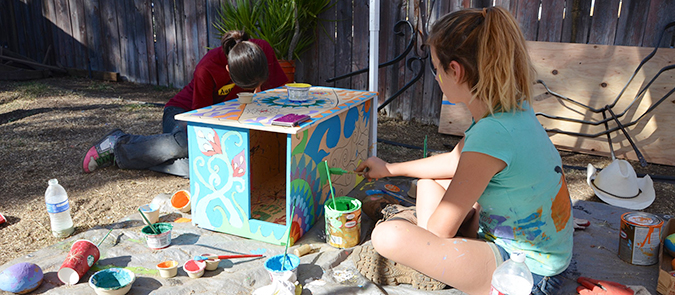The following excerpt was taken from a brief from the novel study commissioned by The Wallace Foundation called: Something to Say: Success Principles for Afterschool Arts Programs from Urban Youth and Other Experts. Denise Montgomery, founder and principal of CultureThrive and co-author of The Wallace Foundation study, outlined the study’s findings during the San Diego Creative Youth Development Summit on February 4, 2015 at The San Diego Foundation.
Suppose afterschool arts programs tried a marketplace model to get more low-income, urban young people involved in the arts. That would make youngsters the programs’ “consumers” – with many options for their time and attention – and suggest the wisdom of finding out what these potential customers actually want.
A novel study, commissioned by The Wallace Foundation, adopted such a market research approach.
The team behind Something to Say: Success Principles for Afterschool Arts Programs from Urban Youth and Other Experts interviewed more than 200 young people to see what inhibited them from taking part in afterschool arts programs, what would bring them in and what would keep them coming back. It then compared their views to the views of a group of leading arts program directors, researchers and other authorities on what constitutes effective afterschool arts programming.
Happily, the two sets of perspectives largely matched, with both kids and adults agreeing that afterschool arts programs should include real-world artists as teachers, hands-on projects, safe and inspiring spaces and public events to showcase the work.
The report also culled from more than 100 literature sources and interviews with 22 experts – researchers, leaders in arts programming for young people and others – to produce the “Top 10” traits of high-quality arts programs.
10 Principles for Effective, High-Quality Afterschool Arts Programs
- Instructors are professional, practicing artists, and are valued with compensation for their expertise and investment in their professional development.
- Executive directors have a public commitment to high-quality arts programs that is supported by sustained action.
- Arts programs take place in dedicated, inspiring, welcoming spaces and affirm the value of art and artists.
- There is a culture of high expectations, respect for creative expression and affirmation of youth participants as artists.
- Programs culminate in high-quality public events with real audiences.
- Positive relationships with adult mentors and peers foster a sense of belonging and acceptance.
- Youth participants actively shape the programs and assume meaningful leadership roles.
- Programs focus on hands-on skill building using current equipment and technology.
- Programs strategically engage key stakeholders to create a network of support for both youth participants and the programs.
- Programs provide a physically and emotionally safe place for youth.
Learn More
Hear Denise Montgomery expand on the 10 principles above during her presentation at our San Diego Creative Youth Development Summit held on February 4, 2015.


